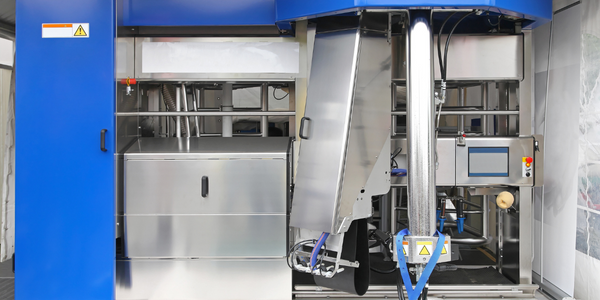SYSPRO Case Study: Tom Barrow Company Streamlines Operations and Enhances Efficiencies with SYSPRO ERP
公司规模
Mid-size Company
地区
- America
国家
- United States
产品
- SYSPRO ERP
- SYSPRO MRP
- SYSPRO Forecasting
技术栈
- ERP
- MRP
- Forecasting
实施规模
- Enterprise-wide Deployment
影响指标
- Productivity Improvements
- Customer Satisfaction
- Cost Savings
技术
- 功能应用 - 企业资源规划系统 (ERP)
- 功能应用 - 制造执行系统 (MES)
适用功能
- 仓库和库存管理
- 商业运营
用例
- 库存管理
- 补货预测
- 过程控制与优化
服务
- 系统集成
- 培训
关于客户
Tom Barrow Company was founded in Atlanta, Georgia in 1955. Initially, the company had only a few product lines but quickly earned a reputation for service and integrity. Over the years, the company expanded its product offerings and added more sales and support staff. By 1965, the company had expanded to a new territory with an office in Jacksonville, Florida, and continued to add several branch offices over the next four decades. By the 1990s, the company began representing applied equipment products, including custom air handling units and a variety of specialty products. Today, Tom Barrow Company is the largest commercial HVAC rep in the Southeast, with offices in Tennessee, Georgia, and Florida, serving customers from 10 offices.
挑战
The company was conducting all work via the processing of paper. Approximately 6,000 orders per month were manually converted into invoices, an extremely time-consuming and error-prone process. To facilitate order processing and inventory management as well as enhance customer service, the Tom Barrow Company deemed it advisable to computerize its operations in 1996. The company faced several challenges including no manufacturing system in place, lack of visibility into inventory, manual reporting resulting in duplication of work and errors, and managing multiple locations.
解决方案
After an extensive software search, the company selected SYSPRO software based on its ability to tailor the solution to meet desired functionalities, as well as the availability of extensive training and support. Each of the company’s locations was brought online, giving management instant access to the status of jobs at each site and inventory levels at each location. SYSPRO ERP enabled the company to automate operations, including the processing of forms and the mailing of invoices. Management could get an immediate and updated picture of the location and status of every job, with data available with just a few clicks. The SYSPRO MRP and Forecasting modules significantly reduced inventory holdings. The ability to tailor functions within SYSPRO, including the customization of screens, simplified complex order processing and eliminated errors in producing invoices. The accessibility of SYSPRO support and the ease of implementing software upgrades were also highly appreciated.
运营影响
数量效益

Case Study missing?
Start adding your own!
Register with your work email and create a new case study profile for your business.
相关案例.

Case Study
System 800xA at Indian Cement Plants
Chettinad Cement recognized that further efficiencies could be achieved in its cement manufacturing process. It looked to investing in comprehensive operational and control technologies to manage and derive productivity and energy efficiency gains from the assets on Line 2, their second plant in India.

Case Study
Airbus Soars with Wearable Technology
Building an Airbus aircraft involves complex manufacturing processes consisting of thousands of moving parts. Speed and accuracy are critical to business and competitive advantage. Improvements in both would have high impact on Airbus’ bottom line. Airbus wanted to help operators reduce the complexity of assembling cabin seats and decrease the time required to complete this task.

Case Study
Hospital Inventory Management
The hospital supply chain team is responsible for ensuring that the right medical supplies are readily available to clinicians when and where needed, and to do so in the most efficient manner possible. However, many of the systems and processes in use at the cancer center for supply chain management were not best suited to support these goals. Barcoding technology, a commonly used method for inventory management of medical supplies, is labor intensive, time consuming, does not provide real-time visibility into inventory levels and can be prone to error. Consequently, the lack of accurate and real-time visibility into inventory levels across multiple supply rooms in multiple hospital facilities creates additional inefficiency in the system causing over-ordering, hoarding, and wasted supplies. Other sources of waste and cost were also identified as candidates for improvement. Existing systems and processes did not provide adequate security for high-cost inventory within the hospital, which was another driver of cost. A lack of visibility into expiration dates for supplies resulted in supplies being wasted due to past expiry dates. Storage of supplies was also a key consideration given the location of the cancer center’s facilities in a dense urban setting, where space is always at a premium. In order to address the challenges outlined above, the hospital sought a solution that would provide real-time inventory information with high levels of accuracy, reduce the level of manual effort required and enable data driven decision making to ensure that the right supplies were readily available to clinicians in the right location at the right time.









